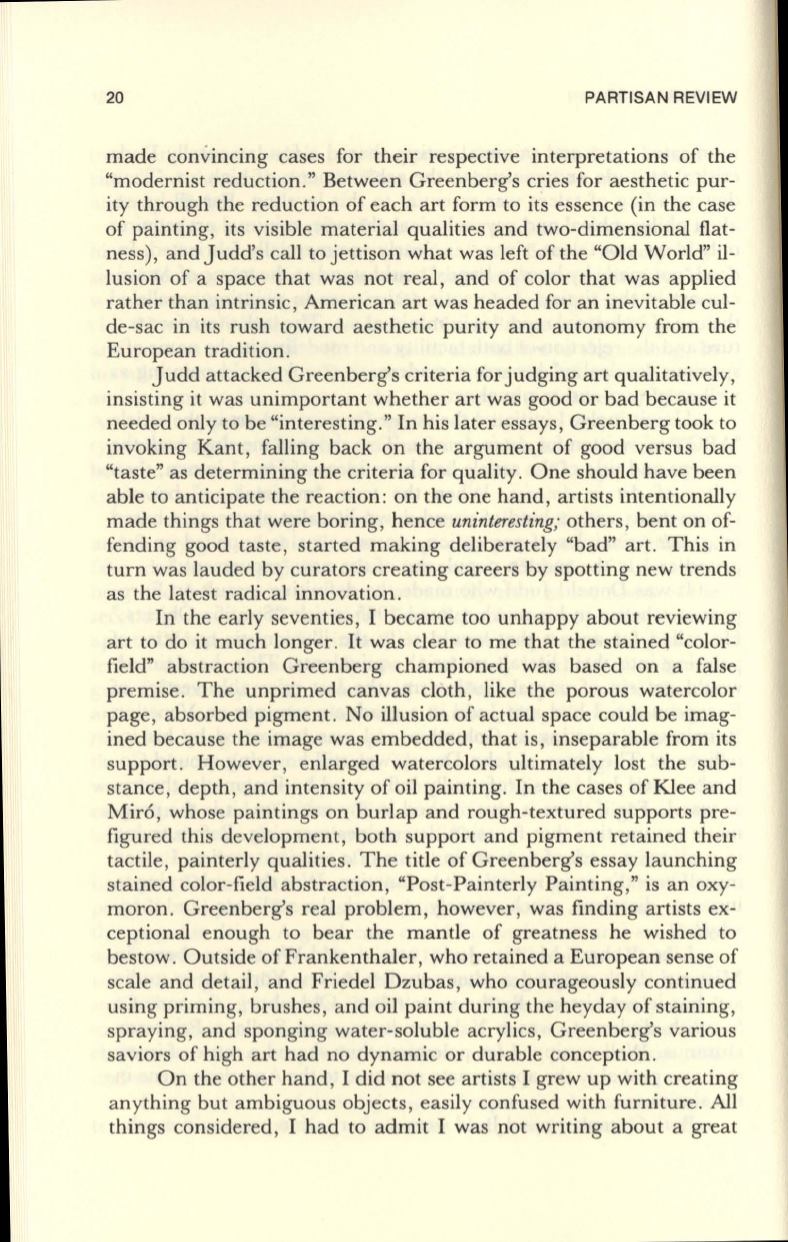
20
PARTISAN REVIEW
made convincing cases for their respective interpretations of the
"modernist reduction." Between Greenberg's cries for aesthetic pur–
ity through the reduction of each art form to its essence (in the case
of painting, its visible material qualities and two-dimensional flat–
ness), and Judd's call to jettison what was left of the "Old World"
il–
lusion of a space that was not real, and of color that was applied
rather than intrinsic, American art was headed for an inevitable cul–
de-sac in its rush toward aesthetic purity and autonomy from the
European tradition.
Judd attacked Greenberg's criteria for judging art qualitatively,
insisting it was unimportant whether art was good or bad because it
needed only to be "interesting." In his later essays, Greenberg took to
invoking Kant, falling back on the argument of good versus bad
"taste" as determining the criteria for quality. One should have been
able to anticipate the reaction: on the one hand, artists intentionally
made things that were boring, hence
uninteresting;
others, bent on of–
fending good taste, started making deliberately "bad" art. This in
turn was lauded by curators creating careers by spotting new trends
as the latest radical innovation.
In the early seventies, I became too unhappy about reviewing
art to do it much longer. It was clear to me that the stained "color–
field" abstraction Greenberg championed was based on a false
premise. The unprimed canvas cloth, like the porous watercolor
page, absorbed pigment. No illusion of actual space could be imag–
ined because the image was embedded, that is, inseparable from its
support. However, enlarged watercolors ultimately lost the sub–
stance, depth, and intensity of oil painting. In the cases of Klee and
Mira, whose paintings on burlap and rough-textured supports pre–
figured this development, both support and pigment retained their
tactile, painterly qualities. The title of Greenberg's essay launching
stained color-field abstraction, "Post-Painterly Painting," is an oxy–
moron. Greenberg's real problem, however, was finding artists ex–
ceptional enough to bear the mantle of greatness he wished to
bestow. Outside of Frankenthaler, who retained a European sense of
scale and detail, and Friedel Dzubas, who courageously continued
using priming, brushes, and oil paint during the heyday of staining,
spraying, and sponging water-soluble acrylics, Greenberg's various
saviors of high art had no dynamic or durable conception.
On the other hand , I did not see artists I grew up with creating
anything but ambiguous objects, easily confused with furniture. All
things considered, I had to admit I was not writing about a great


